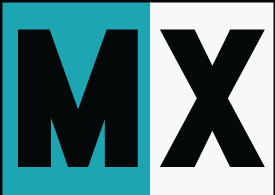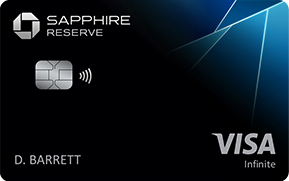
Comparing the Robinhood Gold Card vs Chase Sapphire Reserve might seem tricky, especially with both offering unique perks. What if you pick the wrong one and lose out on the best rewards for your spending habits? That’s why I’m here to help. I’ve evaluated these cards firsthand to create this comparison so you can confidently choose the card that aligns with your lifestyle and financial priorities.
Comparison: Robinhood Gold Card vs Chase Sapphire Reserve
Before I proceed, let’s quickly compare the value of each card based on your priorities, whether it’s low fees, travel benefits, or a straightforward rewards system.
Robinhood Gold Card |
Chase Sapphire Reserve |
|
|---|---|---|
Fees |
No annual fee, no foreign transaction fees |
$550 annual fee, $75 per authorized user, no foreign fees |
Security |
Virtual cards, instant card locking, zero liability |
24/7 fraud monitoring, purchase/return protection, zero liability |
Rewards Structure |
3% cash back on all purchases; 5% on travel via Robinhood portal |
5x points on flights, 10x on hotels/cars via Chase Travel; 3x on dining/travel worldwide |
Sign-Up Bonus |
None |
60,000 points (worth $900 in travel via Chase) after spending $4,000 in 3 months |
Travel Perks |
Basic travel protections, no foreign transaction fees |
Lounge access, $300 annual travel credit, TSA PreCheck/Global Entry credit |
Redemption Options |
Direct cashback |
Points worth 50% more in Chase Travel, 1:1 airline/hotel point transfers |
Robinhood Gold Card vs Chase Sapphire Reserve: Overview
What is Chase Sapphire Reserve?
The Chase Sapphire Reserve is a premium travel rewards credit card offered by JPMorgan Chase, one of the largest financial institutions in the world. Designed for frequent travelers, it provides an array of benefits, including high rewards on travel and dining, a hefty sign-up bonus, and luxury travel perks like airport lounge access and travel insurance. The card is made from durable stainless steel, adding a premium feel to your wallet. To qualify for the Chase Sapphire Reserve, you’ll typically need a credit score of at least 700-740 or higher, depending on other factors like income and credit history.
What is the Robinhood Gold Card?
The Robinhood Gold Card, offered by Robinhood Credit, Inc. and issued by Coastal Community Bank under a Visa license, stands out as a card tailored for investors. Known for offering investment tools, Robinhood launched its Gold Card for its Gold members, offering 3% cashback on all purchases and additional benefits like travel perks and security features. The card is crafted from stainless steel and designed to cater to everyday spenders, with a focus on ease of use and integration with Robinhood’s investment services.
It’s important to note that Robinhood is a financial technology company and not a traditional bank, which reflects its focus on empowering users through its brokerage and investment services.
To access the Robinhood Gold Card, you’ll need an active Robinhood Gold subscription, which is a premium service offering added perks like higher instant deposits and professional research tools. The card’s integration with the Robinhood platform makes it ideal for those already using Robinhood for investments, as rewards are designed to boost your portfolio.
Rewards Structure
When it comes to rewards, the Robinhood Gold Card keeps things simple. You get 3% cash back on all purchases, no matter where you swipe. There’s no need to keep track of categories or limits—it’s a flat rate across the board. Plus, if you’re booking travel through the Robinhood Travel Portal, you’ll earn 5% cash back. It’s straightforward and ideal if you want consistent rewards without the hassle.
The Chase Sapphire Reserve, on the other hand, is a powerhouse for travel and dining enthusiasts. You earn 10x points on hotels and car rentals and 5x points on flights when booked through Chase Travel, but only after you’ve spent $300 on travel annually (thanks to their travel credit). Outside of the portal, you still earn 3x points on other travel and dining worldwide, which includes takeout and delivery services. Oh, and don’t forget the 10x points on Lyft rides and select Peloton purchases. If you prefer points over cash back and travel frequently, the Reserve delivers big.
Fees
Let’s talk costs. The Robinhood Gold Card stands out by having no annual fee, provided you maintain a Robinhood Gold subscription, which itself incurs a separate monthly charge. This subscription is essential to apply for and keep the card. For transactions, the card charges no foreign transaction fees, making it a solid choice for international purchases. However, cash advances come with a fee of $10 or 5% of the transaction amount, whichever is greater.
Notably, there’s no overlimit fee, and authorized users can receive a plastic card at no extra cost. For those who prefer a premium feel, you can upgrade to a stainless steel card for an additional fee. Replacement cards, if needed, may also incur a charge of up to $40 per card. These terms make the card competitive but worth considering based on your usage habits.
The Chase Sapphire Reserve is in a different league with its $550 annual fee and an extra $75 per authorized user. That’s hefty, but they try to offset it with perks like the $300 annual travel credit and all the premium benefits. If you travel often and can maximize the rewards and perks, the fee might feel worth it. Otherwise, it’s a lot to swallow for someone who doesn’t spend enough to justify the cost.
Sign-Up Bonus
The Robinhood Gold Card doesn’t come with a flashy sign-up bonus. If you’re looking for immediate rewards, this card might not wow you in that department. Its strength lies in the long-term simplicity of its rewards structure rather than a one-time perk.
The Chase Sapphire Reserve, however, makes a big entrance with its 60,000-point sign-up bonus after you spend $4,000 in the first three months. That’s worth $900 when redeemed for travel through Chase Ultimate Rewards or even more if you transfer points to one of their partner programs like airlines or hotels. This bonus alone can justify the annual fee for your first year if you’re someone who spends enough to hit the requirement.
Travel Perks and Benefits
When it comes to travel perks, the Robinhood Gold Card keeps things basic but solid. It offers trip interruption protection, auto rental collision damage waiver, and zero liability protection. You’ll also get access to Visa Signature Concierge Services and virtual card numbers for more secure online transactions. For a no-fee card, these benefits are impressive and practical.
The Chase Sapphire Reserve, though, is like the Swiss Army knife of travel cards. You get Priority Pass airport lounge access to over 1,300 lounges worldwide, $300 annual travel credit, and Global Entry/TSA PreCheck fee credit. Plus, there’s a suite of travel insurance options—like trip cancellation insurance (up to $10,000 per person), baggage delay reimbursement, and even emergency medical evacuation coverage. If you travel a lot, these benefits make your life easier and your trips smoother.
Additional Perks
The Robinhood Gold Card focuses on practical, everyday perks. One standout feature is the ability to create virtual cards for secure online spending, which adds a layer of privacy to your transactions. You can also add family members as authorized users, regardless of their age, and easily track spending with spending limits and instant card locks. It’s a nice touch for anyone managing shared finances or looking to build credit within the family.
The Chase Sapphire Reserve, on the other hand, piles on premium extras. Think 10x points on Lyft rides and a complimentary two-year Lyft Pink membership, which comes with exclusive discounts and perks. You also get DashPass from DoorDash for no delivery fees and lower service charges. For frequent travelers, the Reserved by Sapphire program unlocks exclusive dining, sports, and entertainment experiences. These perks aren’t just add-ons—they’re designed to elevate your lifestyle.
Redemption Options
With the Robinhood Gold Card, all cashback rewards automatically funnel into your Robinhood Financial brokerage account, offering you flexibility in how you use them. You can reinvest your rewards into stocks, ETFs, or cryptocurrency, or simply withdraw them as cash. There’s no redemption minimum, and rewards are credited in real-time, which is great if you want immediate access to reinvest. However, you must have a Robinhood Financial account to redeem your rewards, which could be a limitation if you’re not already a Robinhood user.
The Chase Sapphire Reserve offers more versatility but requires a bit more effort. You can redeem points for travel through Chase Ultimate Rewards, where they’re worth 50% more. For example, 60,000 points equal $900 in travel. You can also transfer points 1:1 to travel partners like United, Hyatt, or Marriott, which can unlock even higher value. If travel isn’t on your radar, you can use points for cash back, gift cards, or statement credits, though these options offer less value.
APR and Financing Options
The Robinhood Gold Card offers a variable APR ranging from 19.99% to 32.99%, depending on your creditworthiness and the Prime Rate. There’s no penalty APR, which is a relief if you’re worried about interest hikes for late payments. However, interest on purchases only accrues if you don’t pay your balance in full by the due date—at least 21 days after the billing cycle closes.
For cash advances and Pay Over Time Plans, the same APR range applies, starting from the date of the transaction. Robinhood uses the Average Daily Balance method to calculate interest. Importantly, there’s no balance transfer fee or penalty APR, but keep in mind that late or returned payments can incur fees of up to $40.
The Chase Sapphire Reserve, on the other hand, offers more flexibility. While the APR ranges from 21.74% to 28.74% variable, it stands out with its Pay Over Time feature. This lets you break down larger purchases into manageable monthly payments, either after purchase or during checkout at select retailers like Amazon. It’s a helpful tool if you occasionally need extra time to pay, but keep an eye on the fees and interest rates that apply.
Security and Privacy Features
The Robinhood Gold Card is issued by Coastal Community Bank, and like all Visa cards, it comes with industry-standard security features, including fraud liability protection and encrypted transactions. You can also monitor and manage your card directly in the Robinhood Credit Card App, which includes tools for locking and unlocking the card instantly, tracking spending, and setting alerts for unusual activity. Furthermore, applying for the card won’t impact your credit score unless you accept the offer, which makes it a safer choice for those exploring their options.
The Chase Sapphire Reserve goes above and beyond with its 24/7 fraud monitoring and chip-enabled security. If you’re a frequent traveler, their dedicated fraud protection team can help you feel confident using your card anywhere in the world. You also get purchase protection for new items and return protection if a store won’t take an item back. Both cards have strong protections, but the Sapphire Reserve offers a bit more for big spenders and frequent travelers.
Robinhood Gold Card vs Chase Sapphire Reserve: Which Should You Choose?
The Robinhood Gold Card is perfect for someone who values simplicity, seamless integration with their investments, and consistent rewards. If you’re already a Robinhood user, this card enhances your financial experience by turning everyday purchases into investments. With a Robinhood Gold subscription required to maintain the card, it’s an excellent choice for those already benefiting from the platform’s premium features. Plus, the flat 3% cash back on all purchases, combined with no foreign transaction fees, makes it a standout for everyday spending and international use.
The Chase Sapphire Reserve, on the other hand, is tailored for frequent travelers and premium lifestyle seekers. If you fly often, enjoy dining out, and want top-tier perks like airport lounge access and generous travel protections, this card is worth the $550 annual fee. It’s also ideal if you love the flexibility of redeeming points for travel or transferring them to airline and hotel partners for maximum value.
Chase Sapphire Reserve vs Robinhood Gold Card: Conclusion
I hope this Robinhood Gold Card vs Chase Sapphire Reserve comparison has been able to help you decide which card is truly worth your wallet.
Your decision now should boil down to how you spend and what you value most. So if you’re looking for a no-frills card that rewards every dollar equally, the Robinhood Gold Card is a smart pick. It’s especially appealing if you’re fee-averse or want a straightforward way to earn and redeem cash back.
If you’re someone who travels frequently, prefers luxury benefits, and doesn’t mind paying an annual fee for exceptional perks, the Chase Sapphire Reserve is the clear choice. The sign-up bonus, travel credits, and redemption flexibility can easily outweigh the cost of the card if you leverage its benefits.
Remember, it’s about matching the card to your lifestyle—one rewards simplicity, the other amplifies experiences.
FAQs
- What is the annual fee for the Chase Sapphire Reserve and Robinhood Gold Card?
The Chase Sapphire Reserve has an annual fee of $550, which may seem steep, but it’s offset by valuable perks like a $300 travel credit, airport lounge access, and a high rewards rate on travel and dining. On the other hand, the Robinhood Gold Card technically has no direct annual fee, but it requires an active Robinhood Gold subscription, which costs $5 per month ($60 annually).
- How secure are the Chase Sapphire Reserve and Robinhood Gold Card?
Both cards offer robust security features. The Chase Sapphire Reserve comes with zero liability protection, fraud monitoring, and chip-enabled security. The Robinhood Gold Card also offers zero liability protection, fraud monitoring, and added privacy features like virtual disposable card numbers for online purchases. Both are highly secure but with different additional privacy features.
- Is the Robinhood Gold Card a good card?
The Robinhood Gold Card is a solid option for those who want straightforward rewards, with 3% cashback on all purchases and no annual fee. It’s especially ideal for Robinhood users who are looking to integrate their investment and spending habits. However, if you need extensive travel perks, this card may not match the offerings of premium cards like the Chase Sapphire Reserve.
- Is Chase Sapphire Preferred worth it?
Yes, Chase Sapphire Preferred can be worth it for frequent travelers. With a $95 annual fee, 2x points on travel and dining, and a valuable 60,000-point bonus (worth $750 toward travel), it’s a great card for building up rewards without breaking the bank. If you travel often but don’t need the premium features of the Chase Sapphire Reserve, the Chase Sapphire Preferred is a fantastic choice.
Compare ↓



